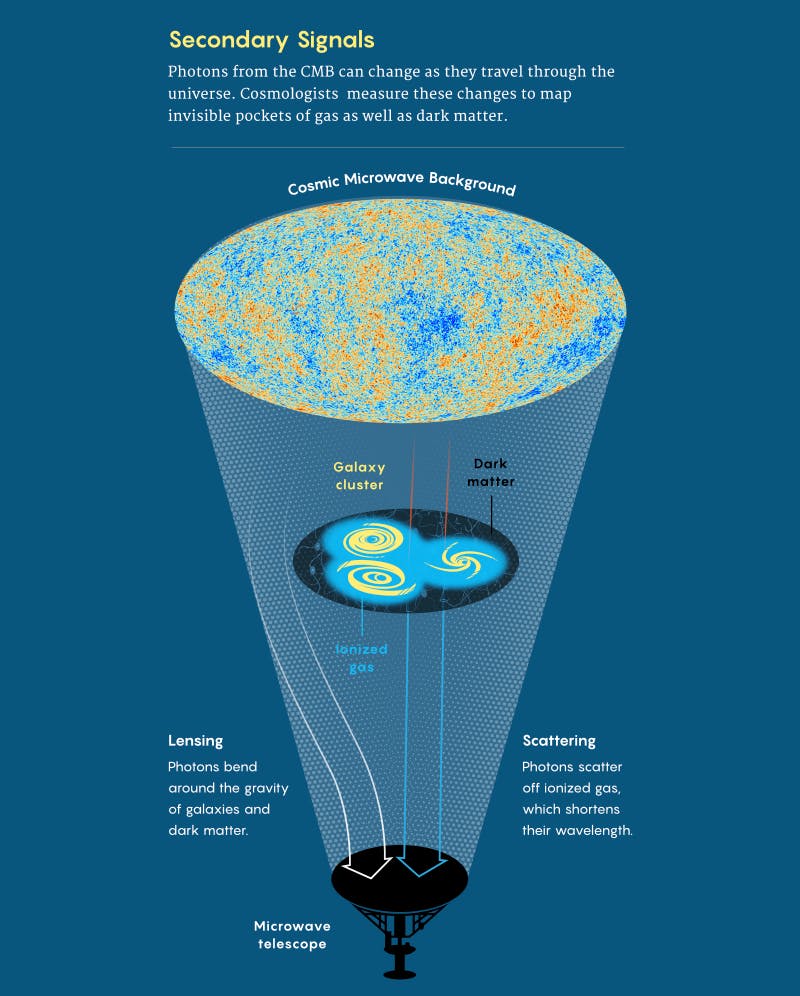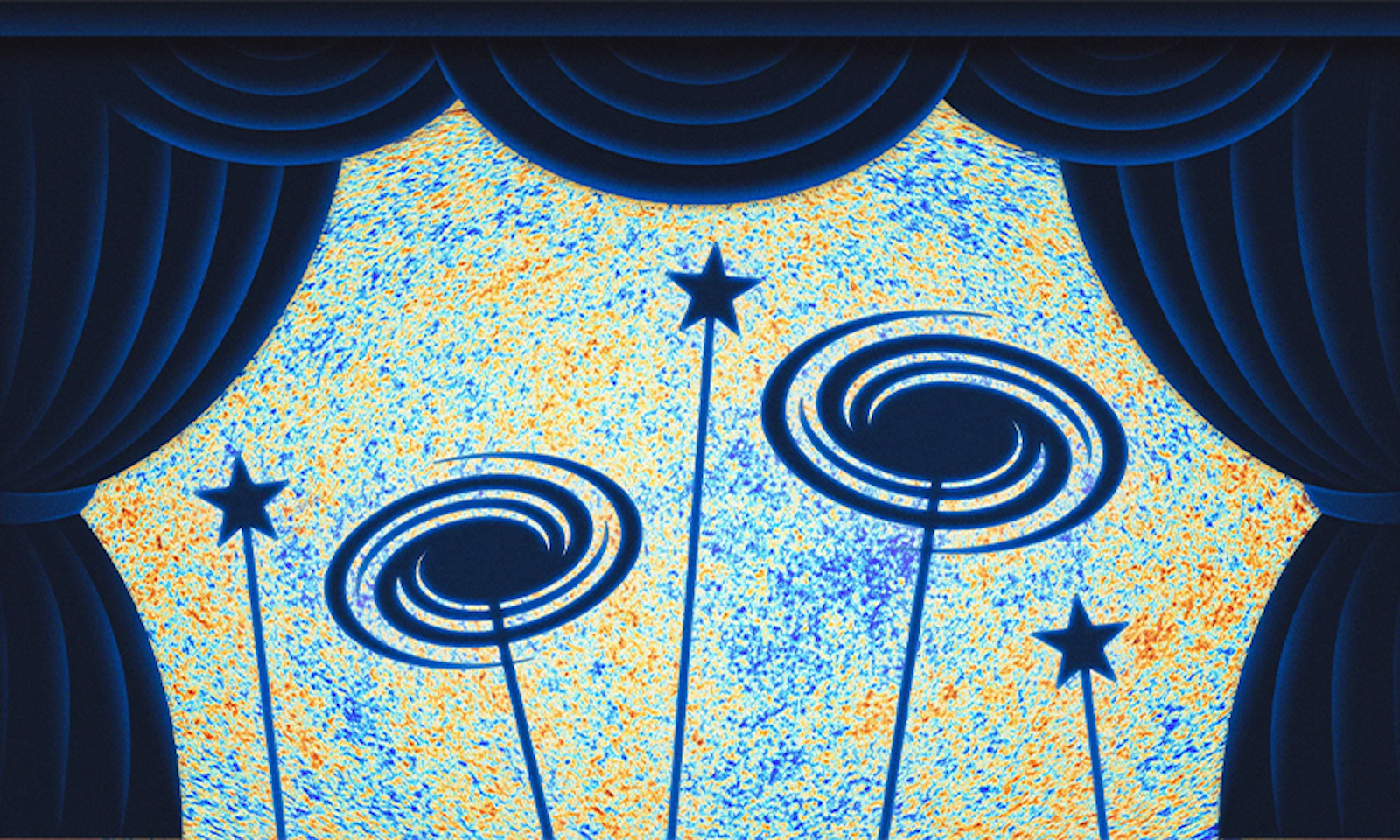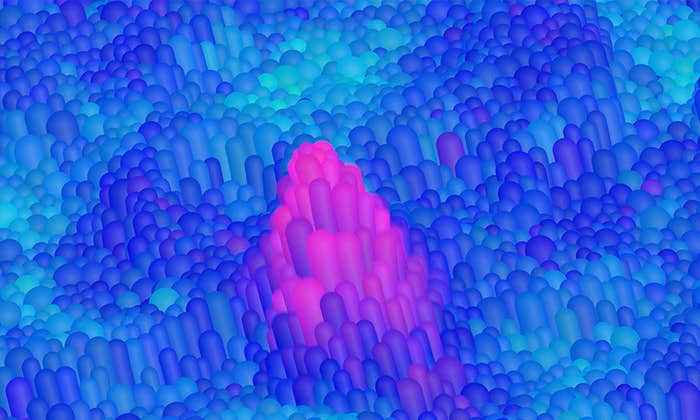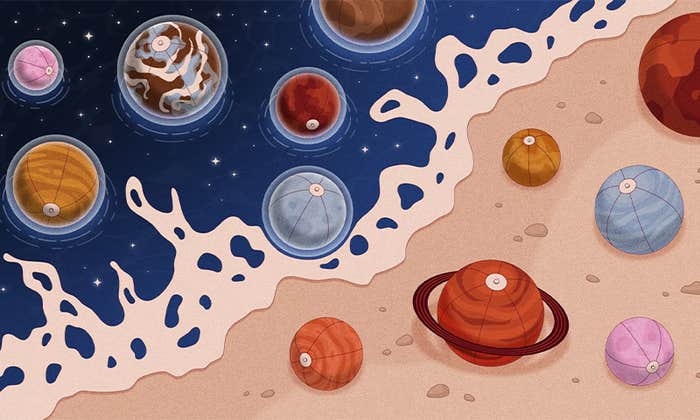Nearly 400,000 years after the Big Bang, the primordial plasma of the infant universe cooled enough for the first atoms to coalesce, making space for the embedded radiation to soar free. That light—the cosmic microwave background (CMB)—continues to stream through the sky in all directions, broadcasting a snapshot of the early universe that’s picked up by dedicated telescopes and even revealed in the static on old cathode-ray televisions.
After scientists discovered the CMB radiation in 1965, they meticulously mapped its tiny temperature variations, which displayed the exact state of the cosmos when it was a mere frothing plasma. Now they’re repurposing CMB data to catalog the large-scale structures that developed over billions of years as the universe matured.
“That light experienced a bulk of the history of the universe, and by seeing how it’s changed, we can learn about different epochs,” said Kimmy Wu, a cosmologist at SLAC National Accelerator Laboratory.
Over the course of its nearly 14-billion-year journey, the light from the CMB has been stretched, squeezed, and warped by all the matter in its way. Cosmologists are beginning to look beyond the primary fluctuations in the CMB light to the secondary imprints left by interactions with galaxies and other cosmic structures. From these signals, they’re gaining a crisper view of the distribution of both ordinary matter—everything that’s composed of atomic parts—and the mysterious dark matter. In turn, those insights are helping to settle some long-standing cosmological mysteries and pose some new ones.
“We’re realizing that the CMB does not only tell us about the initial conditions of the universe. It also tells us about the galaxies themselves,” said Emmanuel Schaan, also a cosmologist at SLAC. “And that turns out to be really powerful.”
A Universe of Shadows
Standard optical surveys, which track the light emitted by stars, overlook most of the galaxies’ underlying mass. That’s because the vast majority of the universe’s total matter content is invisible to telescopes—tucked out of sight either as clumps of dark matter or as the diffuse ionized gas that bridges galaxies. But both the dark matter and the strewn gas leave detectable imprints on the magnification and color of the incoming CMB light.
“The universe is really a shadow theater in which the galaxies are the protagonists, and the CMB is the backlight,” Schaan said.
Many of the shadow players are now coming into relief.
When light particles, or photons, from the CMB scatter off electrons in the gas between galaxies, they get bumped to higher energies. In addition, if those galaxies are in motion with respect to the expanding universe, the CMB photons get a second energy shift, either up or down depending on the relative motion of the cluster.
This pair of effects, known respectively as the thermal and kinematic Sunyaev-Zel’dovich (SZ) effects, were first theorized in the late 1960s and have been detected with increasing precision in the past decade. Together, the SZ effects leave a characteristic signature that can be teased out of CMB images, allowing scientists to map the location and temperature of all the ordinary matter in the universe.
Finally, a third effect known as weak gravitational lensing warps the path of CMB light as it travels near massive objects, distorting the CMB as though it were viewed through the base of a wineglass. Unlike the SZ effects, lensing is sensitive to all matter—dark or otherwise.
Taken together, these effects allow cosmologists to separate the ordinary matter from the dark matter. Then scientists can overlay these maps with images from galaxy surveys to gauge cosmic distances and even trace star formation.

In companion papers in 2021, a team led by Schaan and Stefania Amodeo, who is now at the Strasbourg Astronomical Observatory in France, put this approach to work. They examined CMB data taken by the European Space Agency’s Planck satellite and the ground-based Atacama Cosmology Telescope, then stacked on top of those maps an additional optical survey of nearly 500,000 galaxies. The technique allowed them to measure the alignment of ordinary matter and dark matter.
The analysis showed that the region’s gas didn’t hug its supporting dark matter network as tightly as many models predicted. Instead, it suggests that blasts from supernovas and accreting supermassive black holes forced the gas away from its dark matter nodes, spreading it out so that it was too thin and cold for conventional telescopes to detect.
Spotting that diffuse gas in CMB shadows has helped scientists further address the so-called missing baryons problem. It has also provided estimates for the strength and temperature of the dispersing blasts—data that scientists are now using to refine their models of galaxy evolution and the large-scale structure of the universe.
In recent years, cosmologists have been puzzled by the fact that the observed distribution of matter in the modern universe is smoother than theory predicts. If the explosions recycling intergalactic gas are more energetic than scientists assumed, as the recent work by Schaan, Amodeo, and others seems to suggest, these blasts could be partially responsible for having spread matter more evenly across the universe, said Colin Hill, a cosmologist at Columbia University who also works on CMB signatures. In the coming months, Hill and colleagues at the Atacama Cosmology Telescope plan to unveil an updated map of CMB shadows with a notable jump in both sky coverage and sensitivity.
“We’ve only started to scratch the surface of what you can do with this map,” Hill said. “It’s a sensational improvement over anything that’s come before. It’s hard to believe it’s real.”
Shades of the Unknown
The CMB was a key piece of evidence that helped to establish the standard model of cosmology—the central framework that researchers use to understand the origin, composition, and shape of the universe. But the CMB backlight studies are now threatening to poke holes in that story.
“This paradigm really survived the test of precision measurements—until recently,” said Eiichiro Komatsu, a cosmologist at the Max Planck Institute for Astrophysics who worked to establish the theory as a member of the Wilkinson Microwave Anisotropy Probe, which mapped the CMB between 2001 and 2010. “We may be at the crossroads … of a new model of the universe.”
For the past two years, Komatsu and colleagues have been investigating hints of a new character on the shadow-theater stage. The signal appears in the polarization, or orientation, of CMB light waves, which the standard model of cosmology says should remain constant on the waves’ journey across the universe. But, as theorized three decades ago by Sean Carroll and colleagues, that polarization could be rotated by a field of dark matter, dark energy, or some totally new particle. Such a field would cause photons of different polarizations to travel at different speeds and rotate the net polarization of the light, a property known as “birefringence” that’s shared by certain crystals, such as the ones that enable LCD screens. In 2020, Komatsu’s team reported finding a tiny rotation in the CMB’s polarization—about 0.35 degrees. A follow-up study published last year strengthened that earlier result.
If the polarization study or another result related to the distribution of galaxies is confirmed, it would imply that the universe does not look the same in all directions to all observers. For Hill and many others, both results are tantalizing but not yet definitive. Follow-up studies are underway to investigate these hints and rule out potential confounding effects. Some have even proposed a dedicated “backlight astronomy” spacecraft that would further inspect the various shadows.
“Five to 10 years ago, people thought cosmology was done,” Komatsu said. “That’s changing now. We are entering a new era.”
This article was originally published on the Quanta Abstractions blog.
Lead image: “The universe is really a shadow theater in which the galaxies are the protagonists, and the CMB is the backlight,” said the cosmologist Emmanuel Schaan. Credit: Kristina Armitage / Quanta Magazine.
































